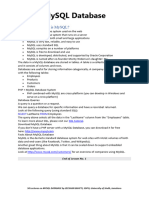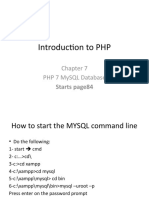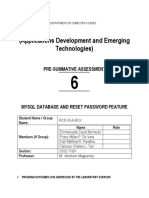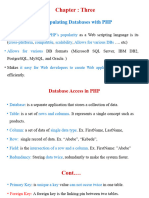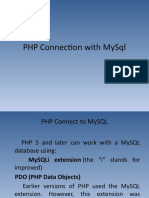0% found this document useful (0 votes)
11 views9 pagesCS214-Lect-PHP and MySQL Connections
The document discusses the interaction between PHP and MySQL, highlighting the use of MySQLi and PDO extensions for database operations. It provides guidance on creating a MySQL database using both procedural and object-oriented PHP code, as well as instructions for connecting to an existing database. The document emphasizes the importance of error checking during database connections and operations.
Uploaded by
tashceph7Copyright
© © All Rights Reserved
We take content rights seriously. If you suspect this is your content, claim it here.
Available Formats
Download as PPTX, PDF, TXT or read online on Scribd
0% found this document useful (0 votes)
11 views9 pagesCS214-Lect-PHP and MySQL Connections
The document discusses the interaction between PHP and MySQL, highlighting the use of MySQLi and PDO extensions for database operations. It provides guidance on creating a MySQL database using both procedural and object-oriented PHP code, as well as instructions for connecting to an existing database. The document emphasizes the importance of error checking during database connections and operations.
Uploaded by
tashceph7Copyright
© © All Rights Reserved
We take content rights seriously. If you suspect this is your content, claim it here.
Available Formats
Download as PPTX, PDF, TXT or read online on Scribd
/ 9





